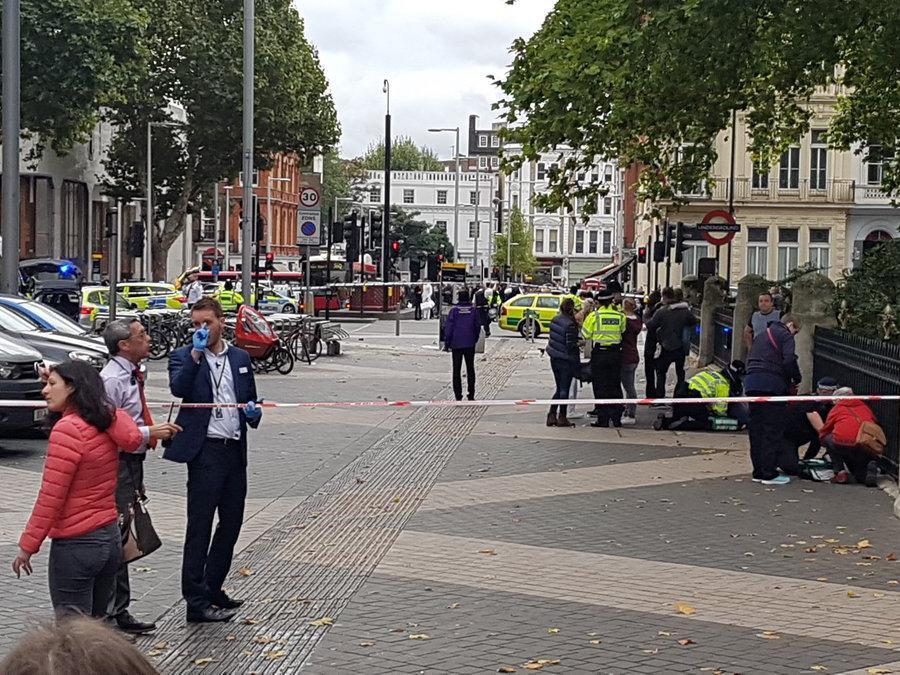Natural History Museum collision leads to calls for protective barriers at London tourist sites
Expert says crash should act as a ‘warning’ over the vulnerability of busy locations

Your support helps us to tell the story
From reproductive rights to climate change to Big Tech, The Independent is on the ground when the story is developing. Whether it's investigating the financials of Elon Musk's pro-Trump PAC or producing our latest documentary, 'The A Word', which shines a light on the American women fighting for reproductive rights, we know how important it is to parse out the facts from the messaging.
At such a critical moment in US history, we need reporters on the ground. Your donation allows us to keep sending journalists to speak to both sides of the story.
The Independent is trusted by Americans across the entire political spectrum. And unlike many other quality news outlets, we choose not to lock Americans out of our reporting and analysis with paywalls. We believe quality journalism should be available to everyone, paid for by those who can afford it.
Your support makes all the difference.Calls for protective barriers to be installed around London’s busiest tourist attractions are mounting after 11 people were injured near the Natural History Museum.
Witnesses described mass panic after a car hit pedestrians in South Kensington on Saturday afternoon, leaving nine victims needing hospital treatment.
The crash followed deadly vehicle attacks in Westminster, London Bridge and Finsbury Park – but police are not treating the incident as terror-related after arresting the driver.
“Whilst enquiries continue, it is believed a car mounted the pavement and collided with a number of pedestrians,” a spokesperson for Scotland Yard said. “The incident is a road traffic investigation and not terrorist-related.”
A former Scotland Yard counter-terror detective said that the crash must act as a “warning” over the vulnerability of Exhibition Road and other crowded areas.
David Videcette told The Independent that the road outside some of Britain’s busiest attractions, including the Natural History Museum, Science Museum and Victoria and Albert Museum, was “outrageously poor and extremely dangerous”.
Noting that parts of the street have no kerb or barriers between vehicles and pedestrians, he added: “It is in keeping with the kind of environments that terrorists like – this road is extremely vulnerable.
“Look at Nice, Berlin, London Bridge, Westminster – they were big long stretches of road with nothing in the way to stop vehicles getting into a place where thousands of people were standing around like sitting ducks.
“We need to take this as a warning that we’ve got to do something about this.”
South Kensington’s museums attracted more than 10 million visitors last year and London is among the world’s most visited cities, famed for open spaces including Hyde Park, Covent Garden and Oxford Street.
Mr Videcette urged authorities to start designing streets with the threat from rising numbers of low-tech terror attacks involving vehicles in mind.
Some analysts have raised concern that protecting some areas would only cause terrorists to find unprotected places elsewhere, but the security expert said that was no excuse not to protect “easily identifiable targets”.
“We’re never going to stop the threat completely, but we should be looking at particularly high risk areas,” Mr Videcette added.
The Metropolitan Police erected “hostile vehicle mitigation” barriers along Westminster Bridge, Lambeth Bridge and Waterloo Bridge in the wake of the London Bridge attack, following a security review.
“We recognise the public is anxious about security following the terrorist attacks in London, and we want to reassure them that we are taking precautions to make the capital a safe place for people to live, work and visit,” a spokesperson said at the time.
“We are considering the use of barriers and other security measures at locations across London.”
The force has since purchased “talon” spikes that can be used to protect high-profile events by puncturing wheels and bringing vehicles to a stop.
Scotland Yard has not yet responded to The Independent’s request for information on whether barriers, concrete blocks and other protective measures would be erected elsewhere in London.
Isis has intensified calls for terror attacks in countries bombing its territories in Syria and Iraq, while encouraging supporters to be increasingly indiscriminate with targets.
In guidance issued in multiple languages through propaganda videos and magazines, the terrorist group has urged followers not to confine themselves to attacking security forces, symbolic landmarks or protected areas where there is a higher change of failure.
Isis has restricted its advice to killing as many people as possible in crowded “soft” targets, with suggestions including concert halls, busy shopping areas and parades.
The propaganda has been played out in a series of deadly attacks across Europe, seeing fanatics launch vehicle and knife attacks in the UK, Germany, France and Spain.
Join our commenting forum
Join thought-provoking conversations, follow other Independent readers and see their replies
Comments